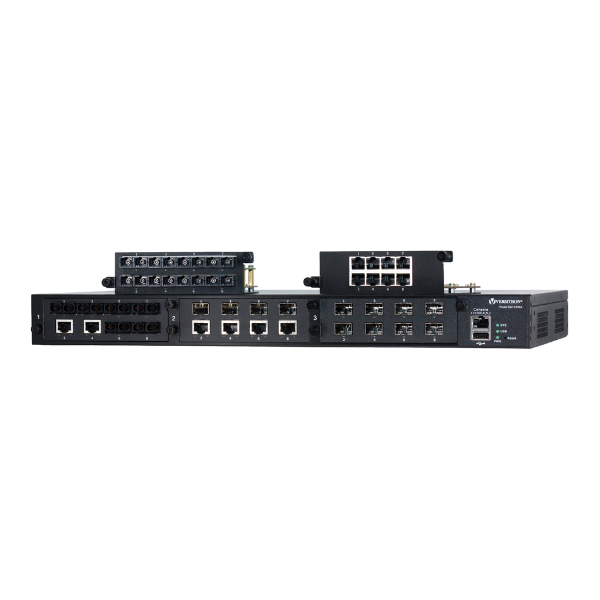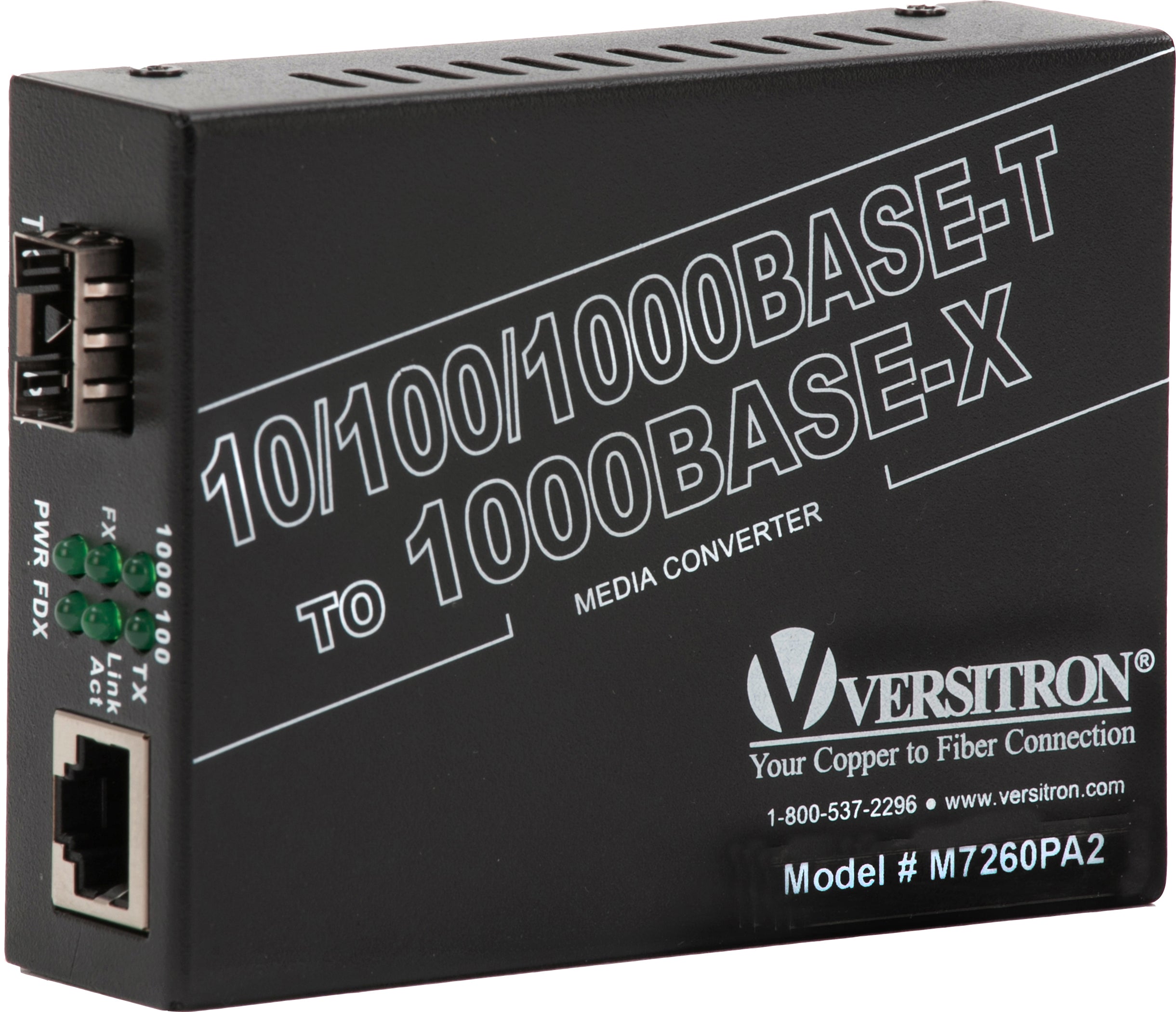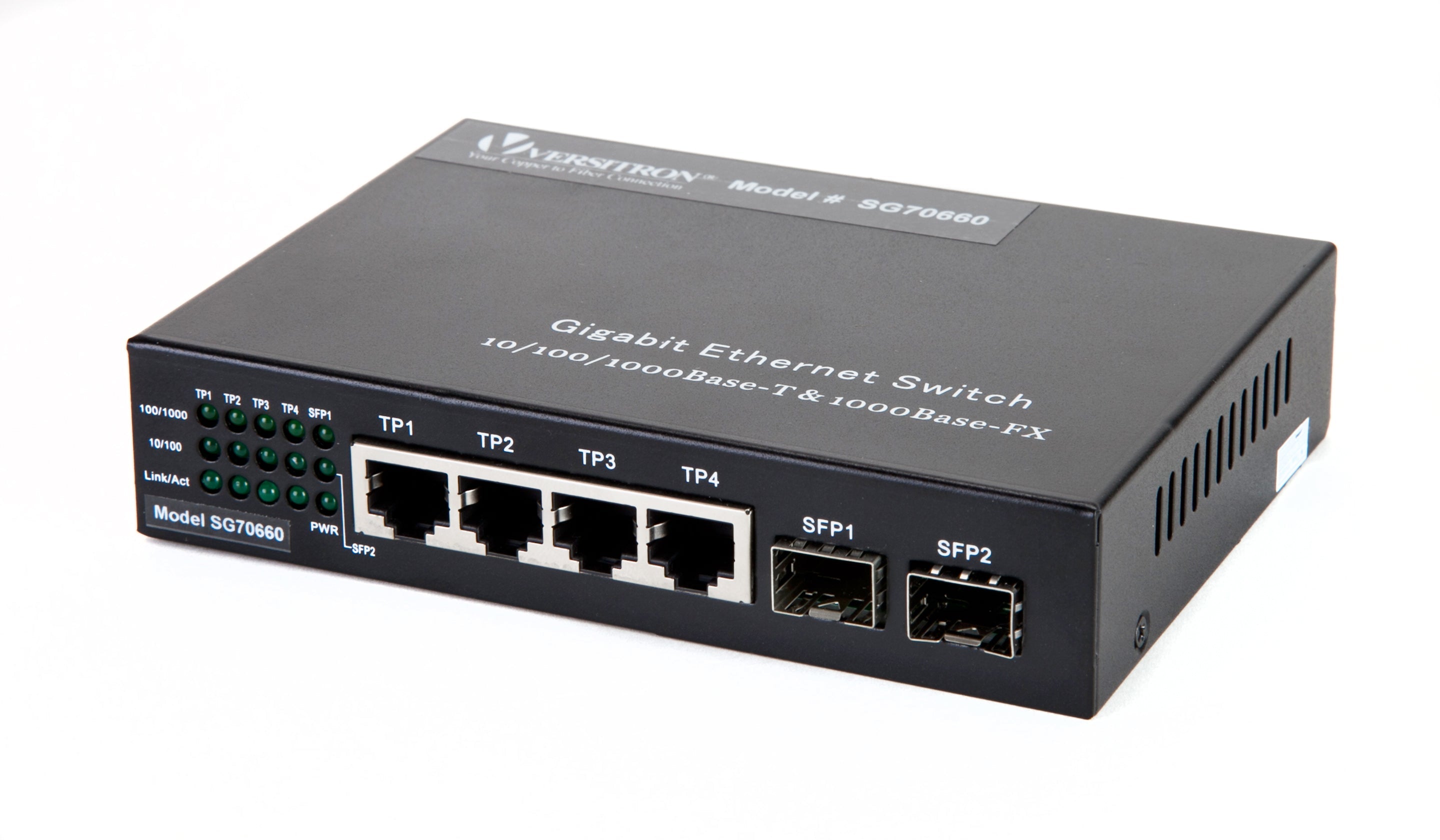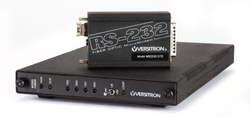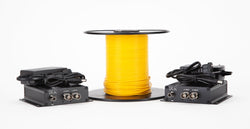Security Apps
Boost Your Security Applications With Fiber Optic Converters
by Greg Massott, Product Specialist


While it is true that copper has proven to be adequate for the secure applications of the past, in today's security conscious climate, it may make sense to upgrade to fiber. Imagine having no worries over lightning strikes, or electromagnetic and radio frequency interference. Imagine having more bandwidth available AND having much longer distances supported. This translates into longer wiring runs for you along with the capability of sending a larger volume of information longer distances. Add to these the "untappability" and 99.9% reliability of the medium, and you can't afford not to give fiber optics serious consideration. Also, take into account that this is a tried and true medium, having been adequately tested by our government and military decades ago at the height of the cold war.
Happily, today's costs of implementing this technology are no longer as prohibitive as they were in the late 1950's, and the cost for cable is now comparable to the cost for copper cable. Additionally, modern plug and play design facilitates ease of installation and less hassle for you. In fact, the marriage of this technology to "mission critical" applications can prove to be a match made in heaven.
In fact, it has never been easier to implement its many benefits into your security system applications. In fact, there are a wide variety of products offered for a wide variety of signal types, enabling you to extend and protect your data quickly and easily.
What exactly do these products do?
In simple terms, these fiber optic converters take a copper signal in, convert that copper signal to light, and transmit the light signal over f.o. cable. A corresponding device positioned on the other end of the cable then converts the light signal back to a copper signal.
For example, if an ethernet signal is taken in and converted, an ethernet signal is what is realized at the other end of the link. The same holds true for data communication signals such as RS-232, RS-485, or RS-422 as well as CCTV signals. These devices generally work in pairs with one converter placed at each end of your link.
What are the benefits of choosing this type of solution?
- Increased Signal Distance - The distance capability of standard copper devices, such as those utilizing twisted pair or coaxial cable, are generally measured in feet and are quite limited. Copper to fiber devices can transmit your data signals up to 110 kilometers depending on the devices and the type of cable being used. (multimode for shorter distances, singlemode for longer distances.)
- Data Multiplexing - Because f.o. cable offers greater bandwidth, conversion devices allow you to multiplex several data signals and transmit them over only one f.o. link.
- EMI/RFI Suppression - The use of f.o. cable and appropriate devices will eliminate outside noise or interference from penetrating into your copper based equipment.
- Grounding/Lightning Protection - These f.o. devices provide isolation from grounding loops, transient voltages, and lightning strikes that could damage your equipment.
Where can such products be used in the security industry?
-
Video Surveillance
Video Surveillance is not something that you want interrupted due to lightning or other unexpected interference. Whether you are installing analog CCTV or IP based security cameras, there are a variety of f.o. products at your disposal. Depending on the camera installation, there are CCTV video converters that can be used in a point-to-point configuration, or CCTV converters that can multiplex several camera signals together to be transmitted over one f.o. link.
For analog CCTV cameras, products are offered with a variety of options such as return Pan/Tilt/Zoom data, bi-directional data, and forward or bi-directional audio capabilities as well as contact-closure.
For IP based cameras, fiber devices can be used in a point-to-point configuration, or a network switch with f.o. capability can be used to multiplex several camera signals in order to get them onto the network. In addition, these devices are available with PoE (Power over Ethernet) to provide the IP based camera with power. This can be very beneficial when you have a remote camera where access to power is limited.

-
Access Control
Access control in the form of card-readers, keypads, intercoms, and contact-closure signals require extremely high signal reliability. All of these signals can benefit from the reliability and safety of f.o. technology. A perfect example of this is a perimeter entry gate installation.
Let's say that you have a CCTV camera at the gate, a bi-directional intercom system, and a contact-closure on the gate itself, and all of these signals need to communicate between the gate and a main house or office that are several thousand feet apart. In the past, you would need to run wire and cable for all three signals and probably provide signal amplification in order to transmit over such a long distance.
However, with f.o. conversion products, you can multiplex all of these signals together on one link and transmit them the full distance. This solution allows you to run less cable, and less equipment which reduces potential points of failure in the application.
-
Data and Telephone Communication
Modems are available for data protocols such as RS-232, RS-530 for telephone lines. The data modems may be used when communicating between remote security devices and the control panel, or when communicating between a master control panel and a remote secondary control panel. The telephone modems are perfect for intercoms and point-to-point telephone ring-down circuits. -
Networking
Networking applications make popular use of f.o. conversion products. These are ideal for connecting networking equipment within a large building or in a campus environment. Devices are available which support Ethernet, Fast Ethernet, and Gigabit speeds
F.O. Switches bring their own unique skill set to the party. These devices are able to monitor the traffic passing through them, and direct the data to the appropriate destination or block it from restricted destinations. This monitoring allows the switch to control and avoid data collisions increasing the efficiency of the network. Fiber Optic Switches can be used as either a point to point device or as a multiplexer to process multiple signals.
Today, ethernet or IP based networks are used for much more than just computers communicating with data servers or surfing the Internet. They are utilized to control HVAC systems, lighting, telephones, and yes, security. Media converters and network switches with f.o. capability can be installed in any security application where you would normally use copper wire.
These types of products are evolving at a rapid pace to provide a wide variety of solutions for your security requirements. Power over ethernet and power over ethernet plus devices are now available in switch or conversion devices. Industrial fiber optic modems for extreme temperature areas or more rugged applications are also available. Security installers and integrators who are looking for more secure communication and installation flexibility should give strong consideration to implementing f.o. technology into their future applications.
Recommended Products
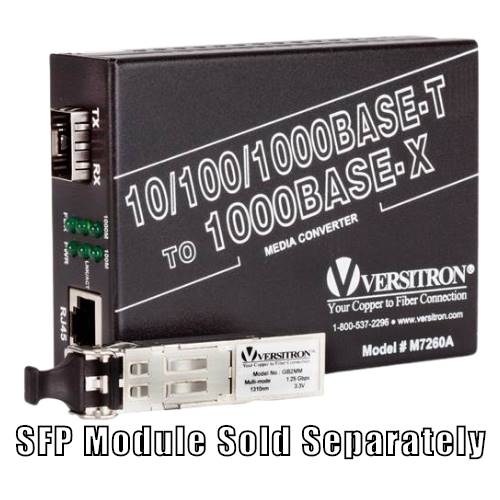
10/100/1000Base-T to 1000Base-SX/LX "Triple Duty" Gigabit Media Converter with SFP GBIC Technology
M7260A
View Details
PoE+ Gigabit Industrial Media Converter | 1-RJ45 Ethernet Port, 1-SFP Fiber Port
MF7260P
View DetailsSpecial offer
Testimonials
"I couldn't be happier with the equipment or the service you gave me during our 'rush' to deploy."
"It's working perfectly and has since the day we first connected the fiber."
"I'm pleased both with the product and probably more so with the people behind the product!"


